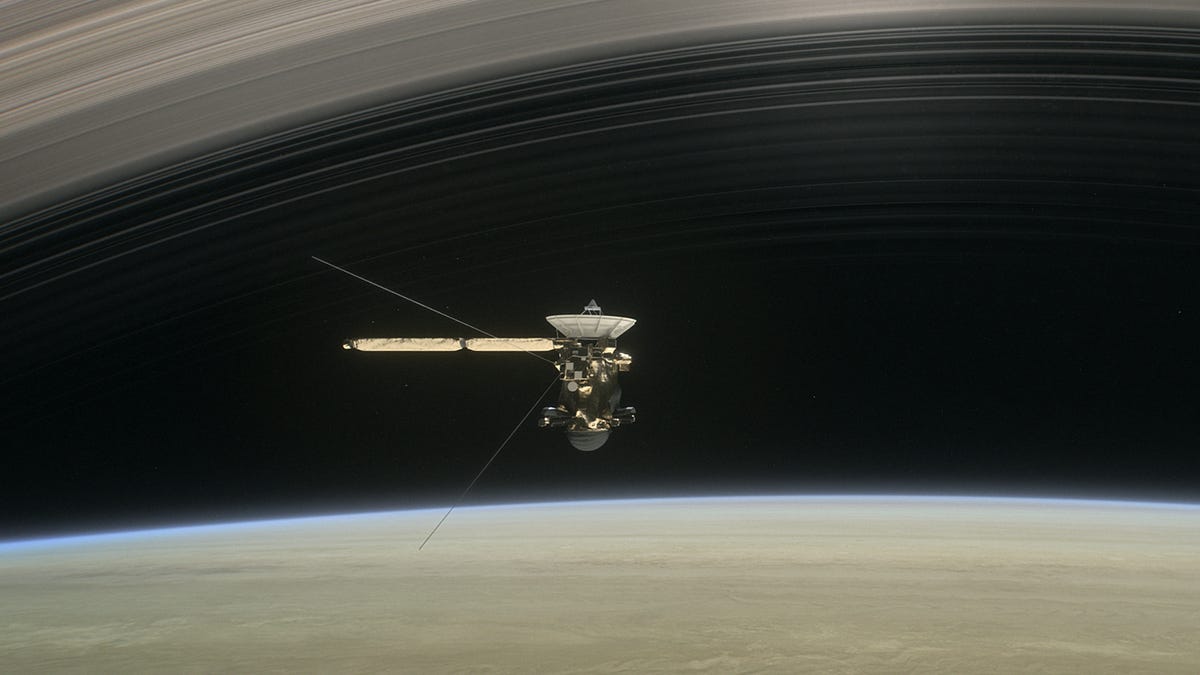Cassini discovers a whole lot of nothing in Saturn dive
NASA dubs the space between Saturn and its rings "The Big Empty" after Cassini's unexpectedly clean dive through the narrow gap.
The Cassini spacecraft isn't going quietly into that good night.
The mission's final days involve the probe taking 22 daring dives between Saturn and its rings. The first took place on April 26. On Monday, NASA reported a surprising discovery from that dive's data: it's really empty between the planet and the rings.
NASA says its scientists are "puzzled" that the area is pretty much free from dust. Researchers converted data from one of Cassini's instruments into audio in order to listen for sounds of dust particles hitting the spacecraft, but heard very little evidence of impacts.
"It was a bit disorienting -- we weren't hearing what we expected to hear," said Cassini team member William Kurth. "I've listened to our data from the first dive several times and I can probably count on my hands the number of dust particle impacts I hear."
The gap between Saturn and its rings is just 1,200 miles (2,000 kilometers) wide. The planet's rings consist of ice and rock particles. Images of the gap led NASA scientists to believe it is clear of large particles that could damage Cassini, but they expected more dust than was found.
Before the first dive, mission control oriented Cassini's large main antenna dish to protect it from debris, which turned out to be an unnecessary precaution.
"The region between the rings and Saturn is 'the big empty,' apparently," said Cassini project manager Earl Maize.
Cassini's next dive is scheduled for Tuesday. The spacecraft will be out of contact for a period of time during the dive, but should get back in touch with Earth on Wednesday to transmit data.
The Cassini mission launched in 1997 as a joint project from NASA, the European Space Agency and the Italian Space Agency. The spacecraft is scheduled to destroy itself in Saturn's atmosphere in September.
Does the Mac still matter? Apple execs tell why the MacBook Pro was over four years in the making, and why we should care.
Solving for XX: The industry seeks to overcome outdated ideas about "women in tech."


